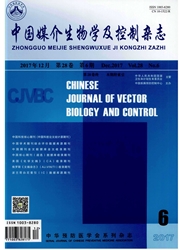

 中文摘要:
中文摘要:
目的评估社区登革热防控措施实施情况,为优化登革热疫情响应和适应机制提供建议。方法 2014年4-6月,在广州市荔湾区、越秀区、海珠区和白云区采用个体深入访谈及小组访谈法,调查居民、感染者、疾病预防控制部门、医院、街道城管(爱卫会)、消毒站、居委会等工作人员93人,了解各部门对登革热防治、疫情响应与适应机制的认识及建议。结果登革热主要暴发于人口密集、蚊虫孳生地与栖息地等处;社区主要采取"自上而下"的干预措施;防治机构和患者对登革热的防治认识存在差距;社区主要依靠居委会清除蚊媒孳生地,居民参与较少;入户蚊媒调查面临困难且影响结果的准确性;登革热检测的收费制度及防治人员业务认知程度影响登革热及时发现和疫情应对,社区成蚊杀灭工作效果欠佳。结论登革热高风险地区应建立长效综合干预适应机制,开展疫情监测与预警,组织居民参与社区媒介生物综合治理,做好应急响应工作。
 英文摘要:
英文摘要:
Objective To assess the prevention and control measures in communities, in order to optimize the response and adaptation strategies to dengue fever. Methods From April to June 2014, stakeholders analysis were conducted through personal interviews and focus groups in Liwan, Yuexiu, Haizhu, and Baiyun districts of Guangzhou. There were 93 participants which from general public, patients, staffs from CDC, hospital, municipal administration (Patriotic Health Campaign Committee), disinfection station, and neighborhood committee. Results Outbreak sites with high density of population were surrounded with vector breeding and habitats. The top-down approaches were used in communities. There were knowledge gaps between prevention institutions and patients. Community dengue prevention mainly depend on neighborhood committee and less on residents' participation. Indoor vector surveillance results were inaccurate and was curbed in process. Early case detection and response were affected by fee charge system and cognitive level of Health staffs. There was little effect of insecticide using in communities. Conclusion Sustainable integrated response strategies should be established in high risk areas including epidemic surveillance, early warning, motivating residents to participate in community integrated vector management, and conducting insecticide space-spraying for emergence response.
 同期刊论文项目
同期刊论文项目
 同项目期刊论文
同项目期刊论文
 期刊信息
期刊信息
